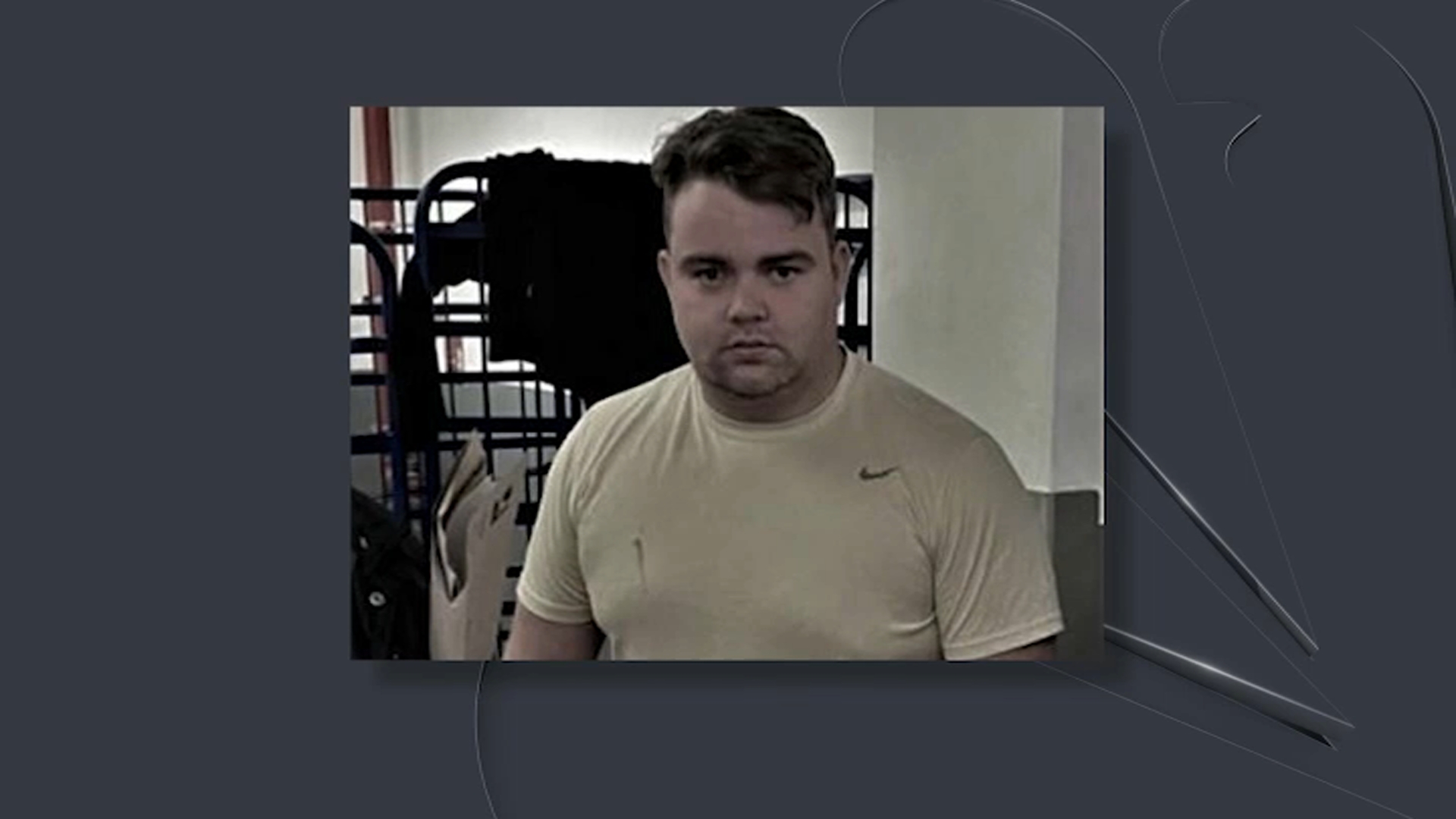Ed Heywood recalled the moment his life almost ended in 2009.
Nearing retirement, the school principal was riding in the right front passenger seat of a transit bus on that August day, accompanying a colleague who was getting his commercial driver’s license.
WATCH ANYTIME FOR FREE
Stream NBC10 Boston news for free, 24/7, wherever you are. |
A black pickup truck appeared out of nowhere on the highway.
“I heard the driver say, ‘Eddie, look at this guy.’ And by the time I looked up, he was in my lap. He just hit us head-on. Bang!” Heywood described. “Nothing has been the same since.”
Get updates on what's happening in Boston to your inbox. Sign up for our News Headlines newsletter.
The driver of the truck, Peter Simon, had been trying to escape police, who fired several shots at him as he sped through a crowded shopping center. It was a wild scene former Cheshire County Attorney Peter Heed recounted to us last month.
“In trying to get out of the parking lot, he actually drove over a huge grassy median and went flying into the air like you’d see in the movies,” Heed said.
Moments later, there was the devastating head-on collision with the bus.

“I remember lying on the floor of the bus, gurgling blood because I couldn’t breathe,” Heywood said. “It was an experience I wouldn’t wish upon anybody.”
First responders airlifted Heywood to an area hospital. Among his many injuries, Heywood endured total reconstructive surgery to his face and jaw after he had slammed into the windshield of the bus.

He never saw the driver who him, until 14 years later when Simon showed up on TV news, accused of hitting and killing Waltham police officer Paul Tracey and National Grid worker Roderick Jackson.
We tracked down Heywood, who now lives in Florida, along with his son, Reid, to get their reaction to the tragedy.
“To see that his person has gotten out and then pulls something like this is just ridiculous,” Reid Heywood said. “It’s beyond any understanding.”
Attorney Michael Hulser represented Simon after the police chase and serious crash in Keene. That case concluded with his client pleading not guilty by reason of mental illness.
As we previously reported, Simon was diagnosed with a dissociative disorder and struggled with substance abuse.
“He was extremely anxious when I first met him,” Hulser said. “He was inclined to run when followed by police, unfortunately.”
Following the criminal case, Simon was committed to a secure psychiatric facility in prison and later transferred to the New Hampshire State Hospital.
Court records show he was regularly evaluated by doctors and gradually improved his behavior through intense therapy and prescribed medication.
By 2015, he was out of the hospital.
“He was a completely different person when he was released,” Hulser said. “He was calm, conversive, articulate and he was smiling.”
Hulser lost track of his client after that, but has since learned he relapsed into violent behavior after his release from the hospital.
In 2016, a Franklin, New Hampshire police report NBC10 obtained said he tried to strangle a man with a power cord and threatened to kill a woman with a hammer.
While attempting to flee police, court records say he endangered the public by driving in the oncoming lanes of traffic and turning off his headlights to avoid detection.
When police arrested Simon, he had a blood alcohol level of .16. An officer reported Simon had a laceration on his forehead and noticed a piece of fencing sticking out of the grill of his van.
It turned out Simon had smashed into a fence and another vehicle when he initially tried to flee the scene of the assault.
At the hospital, police said, Simon seemed surprised when they informed him about the litany of criminal charges he was facing.
“Simon became increasingly confused as his time at the hospital dragged on,” the officer wrote in his report. “He asked several times why he was there and who I was.”
Simon pleaded guilty the following year in Merrimack Superior Court to aggravated DUI, disobeying an officer, criminal threatening, and 2nd degree assault where he was sentenced two to four years in state prison.

“I had so hoped he would get his life back together permanently,” Hulser said. “Mental illness is a very tough thing to treat, to cure, and to monitor. It just plain is.”
Other run-ins with law enforcement followed, according to court records, prior to last month’s tragic outcome in Waltham.
Susan Stearns is executive director of the National Alliance on Mental Illness (NAMI) in New Hampshire and stressed that the majority of people with mental illness are not violent.
“We know that people recover from mental illness and go on to live full lives in their community,” Stearns said. “We need a robust mental health system that provides them with the level of support and supervision they need to live in the least restrictive environment possible.”
Stearns noted that lawmakers recently funded the construction of a new forensic hospital, a significant investment in mental health treatment.
Once more details emerge about Simon’s path following his release from the state hospital, Stearns said there should be a full review to see if the system provided any support to make sure he was getting treatment and taking his medication.
“Were there missed opportunities? Were there things that should have happened?” Stearns asked. “We always want to learn from ay tragedy in order to prevent a future one.”
Simon is currently scheduled for a dangerousness hearing on Thursday morning in Waltham District Court.
That is when a judge will decide if he should remain locked up while awaiting trial because he poses a danger to himself or the community. Simon’s public defender did not respond to our request for comment.
After his life was forever changed in 2009, Ed Heywood said he suffers from severe PTSD related to the crash. He avoids traveling by car, and when he does, he will only sit in the back seat.
“I don’t think I will ever recover from the pain and suffering that I still have today,” Heywood said.
His son, Reid, wonders how Simon and his lengthy criminal history and struggles with mental illness seemingly slipped through the cracks.
“The question primarily on my mind is, ‘Who is responsible?’ he told us. “This was absolutely a dropped ball.”



